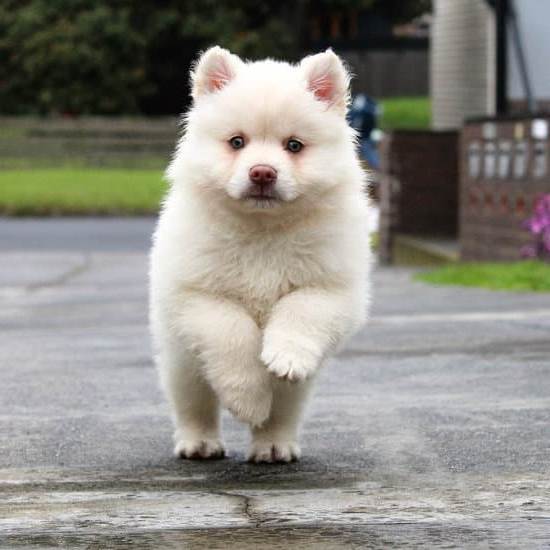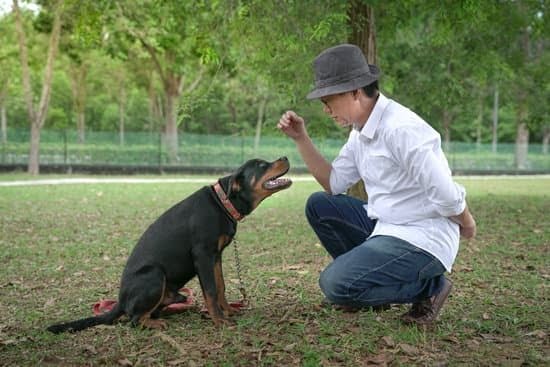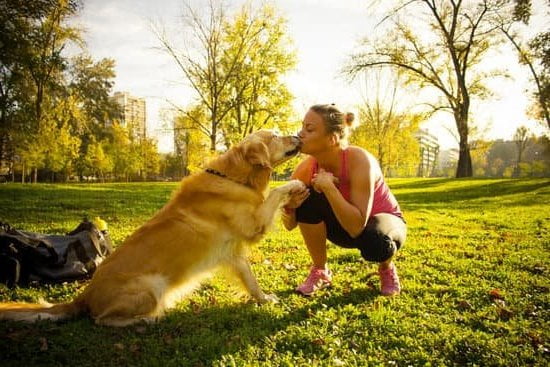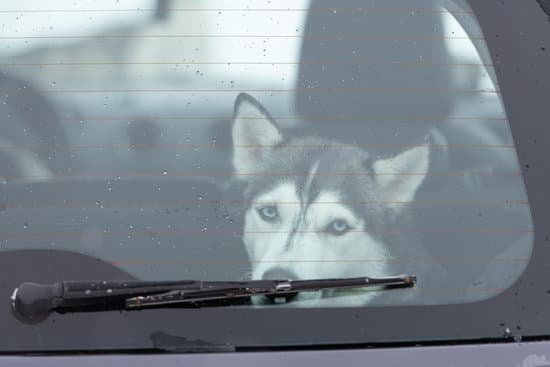Potty training a dog is an essential aspect of responsible pet ownership. Without proper potty training, dogs can create messes and cause frustration for their owners. This article will explore the importance of potty training for dogs and provide tips and techniques for successful training.
Understanding your dog’s behavior and potty habits is crucial in effectively potty training them. By recognizing the signs that indicate when they need to go, you can proactively guide them to the appropriate spot. Positive reinforcement training techniques are also effective in encouraging good potty habits in dogs. These techniques will be discussed in detail to help owners understand how to incentivize their pets.
Additionally, crate training plays a significant role in potty training for dogs. When utilized correctly, a crate can aid in teaching a dog bladder and bowel control. Creating a consistent potty training schedule is also key to success. By establishing a routine, dogs can learn when and where they should go, reducing accidents inside the house. This article will delve into the various aspects of creating an effective schedule.
Accidents are inevitable during the potty training process, but knowing how to handle them is essential for progress. We will provide helpful tips for dealing with setbacks and accidents during this challenging but rewarding journey. Lastly, we will touch on tips for potty training adult dogs and when it may be necessary to seek professional assistance for particularly difficult cases.
Understanding Your Dog’s Behavior and Potty Habits
Learning Your Dog’s Signals
Every dog has its way of communicating its needs, including when it needs to go potty. It’s essential for pet owners to understand their dog’s body language and behavior when they need to relieve themselves. Some common signs that indicate your dog needs to go potty include whining, circling or pacing, sniffing around, scratching at the door, or suddenly becoming restless.
Establishing a Routine
Dogs are creatures of habit and thrive on routine. By observing your dog’s behavior patterns, you can begin to establish a consistent schedule for potty breaks. Take note of the times when your dog typically needs to go potty and make a conscious effort to take them out at those times every day. Consistency is key in helping your dog understand where and when they should do their business.
The Role of Marking Behavior
Marking behavior is common in both male and female dogs, but it is more prevalent in unneutered males. This behavior involves urinating on objects or territory as a way of marking it as their own. Understanding this natural instinct can help pet owners distinguish between regular potty habits and marking behavior, which may require different training techniques.
By understanding your dog’s unique behavior and potty habits, you can tailor your training approach to best suit their individual needs. Whether you have a young puppy or an adult dog, patience and consistency are fundamental in successfully potty training your furry companion.
Positive Reinforcement Training Techniques for Potty Training
When it comes to potty training your dog, positive reinforcement techniques can be highly effective. This form of training focuses on rewarding good behavior rather than punishing bad behavior, which can create a positive association with using the bathroom in the appropriate place.
Here are some positive reinforcement techniques that can be utilized for potty training:
1. Use treats: Whenever your dog successfully goes to the bathroom outside or in their designated area, reward them with a small treat. This will reinforce the behavior and encourage them to continue.
2. Praise and affection: Along with treats, verbal praise and physical affection such as petting or belly rubs can also serve as rewards for your dog’s good potty habits. Positive words and gestures will let them know they’ve done a great job.
3. Create a routine: Dogs thrive on routines, so establishing a consistent schedule for bathroom breaks can help with potty training. Take your dog out at the same times every day, such as first thing in the morning, after meals, and before bedtime.
Remember, consistency is key when using positive reinforcement techniques for potty training. Over time, your dog will learn where they should go to the bathroom and what behavior earns them rewards.
By implementing these positive reinforcement strategies into your potty training routine, you can effectively teach your dog where and when they should go to the bathroom without causing unnecessary stress or fear. With patience and consistency, even the most stubborn dogs can be successfully potty trained.
Crate Training and Its Role in Potty Training
What Is Crate Training?
Crate training is a method for teaching your dog to be comfortable and happy in a crate or kennel. It provides a secure and safe space for your dog, similar to a den, where they can relax and feel protected. This technique can be extremely useful for potty training as it helps to manage your dog’s behavior when you are unable to supervise them.
The Role of Crate Training in Potty Training
When utilized properly, crate training can play a crucial role in the potty training process. Dogs naturally avoid soiling their sleeping area, so when they are confined to a crate, it encourages them to hold their bladder and bowels until they are let out. This helps to prevent accidents inside the house and teaches the dog proper bathroom habits.
How to Incorporate Crate Training Into Potty Training
To effectively use crate training for potty training, it’s important to gradually introduce your dog to the crate in a positive way. Begin by leaving the door open so your dog can freely explore and enter the crate on their own.
Then, start feeding meals inside the crate or using treats and toys to create a positive association with it. Once your dog is comfortable, you can begin confining them for short periods of time while gradually increasing the duration as they become more accustomed to it.
Crate training is not only beneficial for potty training but also serves as a valuable tool for providing security and comfort for your furry friend. With patience and consistency, this method
Creating a Consistent Potty Training Schedule
A consistent potty training schedule is crucial for effectively teaching your dog where and when to go to the bathroom. Dogs thrive on routine, so establishing a regular schedule for feeding, potty breaks, and walks can greatly aid in the potty training process.
Typically, puppies need to relieve themselves shortly after waking up, after eating or drinking, and before bedtime. Adult dogs may also follow a similar schedule, but they have better bladder control and can hold it for longer periods.
It’s important to be patient and consistent with your potty training schedule. Take your dog outside to the designated potty area at the same times every day. Use verbal cues such as “go potty” or “do your business” as they are doing their business to associate these words with the action.
Additionally, always praise your dog enthusiastically and offer treats immediately after they successfully eliminate outdoors. This positive reinforcement helps reinforce the desired behavior and encourages your dog to continue going in the right spot.
In addition to regular outdoor breaks, it’s important to monitor your dog’s behavior indoors. Watch out for signs that they may need to go outside such as circling, sniffing around, or suddenly wandering off from an activity. By paying attention to these subtle cues, you can anticipate when your dog needs a potty break even if it’s not part of the regular schedule.
| Activity | Description |
|---|---|
| Establishing Routine | Create a consistent schedule for feeding, potty breaks, and walks. |
| Using Verbal Cues | Associate specific words with the act of elimination such as “go potty” or “do your business.” |
| Watching for Cues | Pay attention to behavioral signs that indicate your dog needs a bathroom break. |
Dealing With Accidents and Setbacks
Accidents happen, and setbacks are common when potty training a dog. It’s important to remember that these occurrences are a normal part of the process and should not be seen as a failure on your part or your dog’s. Understanding how to effectively deal with accidents and setbacks can help you stay on track and successfully potty train your furry friend.
When accidents happen, it’s crucial to remain calm and avoid punishing your dog. Punishment can create fear and anxiety in your pet, potentially leading to more accidents in the future. Instead, focus on clean-up and continue with positive reinforcement techniques to encourage desired behavior. Using an enzymatic cleaner will help eliminate any traces of the accident scent, reducing the likelihood of repeat incidents in the same spot.
Setbacks may occur for various reasons, such as changes in routine, stress, or illness. If you notice an increase in accidents after a setback, consider revisiting the basics of potty training and providing extra patience and support for your dog. Keep in mind that consistency is key, so stick to your established schedule and continue reinforcing good bathroom habits.
Positive reinforcement is especially important during setbacks. By rewarding your dog for using the appropriate bathroom area, you can help rebuild their confidence and motivation to follow the potty training guidelines. With patience and understanding, you can navigate through accidents and setbacks while keeping your focus on successful potty training for a happy and healthy dog.
Tips for Potty Training Adult Dogs
Potty training an adult dog can be more challenging compared to training a puppy, but it is definitely possible with patience and consistency. One important thing to remember is that adult dogs can still learn new behaviors and habits, including potty training. It’s essential to approach the training process with a positive mindset and realistic expectations.
When potty training an adult dog, it’s crucial to establish a routine and schedule for bathroom breaks. Take your dog outside first thing in the morning, after meals, before bedtime, and at regular intervals throughout the day. By sticking to a consistent schedule, you can help your dog understand when and where they are expected to eliminate.
Positive reinforcement is key when potty training adult dogs. Use verbal praise, treats, or their favorite toy to reward them for eliminating in the designated area. Avoid punishing or scolding your dog for accidents, as this can create anxiety and confusion. Instead, focus on rewarding good behavior and providing gentle guidance when accidents occur.
Here are some useful tips for potty training adult dogs:
- Be patient and understanding
- Use positive reinforcement techniques
- Establish a consistent potty schedule
- Provide easy access to the designated potty area
| Tip | Description |
|---|---|
| Patience | Adult dogs may take longer to learn new habits, so patience is important. |
| Positive Reinforcement | Reward good behavior with praise, treats, or toys. |
| Consistent Schedule | Establish a regular bathroom routine for your adult dog. |
| Easy Access | Make sure your dog can easily access the designated potty area. |
Hiring a Professional Trainer for Difficult Cases
When it comes to potty training your dog, sometimes you might encounter difficulties that seem impossible to overcome. This is where hiring a professional trainer can be beneficial for both you and your furry friend. A professional trainer has the expertise and experience to address difficult cases of potty training and can provide valuable guidance and support.
Here are a few reasons why hiring a professional trainer for difficult potty training cases can be advantageous:
- Expertise: Professional trainers have extensive knowledge and understanding of dog behavior, including the underlying causes of potty training issues. They can accurately assess your dog’s specific challenges and tailor a training plan accordingly.
- Customized Training Plans: A professional trainer can create a personalized potty training program based on your dog’s behavior, habits, and environment. This customized approach can address the root cause of the problem more effectively.
- Support and Guidance: Dealing with difficult potty training cases can be frustrating and overwhelming. A professional trainer not only provides hands-on guidance but also offers ongoing support and encouragement as you navigate through the training process.
In some instances, hiring a professional trainer may be the best course of action when traditional methods have proven unsuccessful in potty training your dog. While it may involve an investment in terms of time and money, the long-term benefits of successfully potty training your dog outweigh the challenges you may face.
By seeking the expertise of a professional trainer, you can gain valuable insights into your dog’s behavior while working towards achieving a happy, healthy relationship with your pet.
Conclusion
In conclusion, successful potty training is essential for a happy and healthy dog. Through understanding your dog’s behavior and potty habits, using positive reinforcement techniques, crate training, and creating a consistent schedule, you can effectively potty train your furry friend. Dealing with accidents and setbacks is also part of the process, but with patience and persistence, you can overcome these challenges.
It’s important to note that potty training isn’t just for puppies – adult dogs can also be trained using similar methods. With patience and dedication, adult dogs can learn new habits and adhere to a consistent routine. However, for particularly difficult cases or if you find yourself struggling to make progress with your dog’s potty training, it may be beneficial to seek the assistance of a professional trainer.
Ultimately, by investing time and effort into potty training your dog, you’re not only preventing messes in the house but also fostering a strong bond with your pet. A well-potty trained dog is a happier and healthier one, making life more enjoyable for both you and your furry companion. So yes, you can absolutely potty train a dog – it just takes commitment and consistency.
Frequently Asked Questions
How Long Does It Take to Potty Train a Dog?
The time it takes to potty train a dog can vary widely depending on the breed, age, and individual temperament of the dog. Some dogs can be fully potty trained in a few weeks, while others may take several months.
Can Dogs Be Fully Potty Trained?
Yes, dogs can be fully potty trained with patience, consistency, and positive reinforcement. It’s important to establish a routine, take the dog out frequently, and reward them for going to the bathroom outside.
Is It Hard to Potty Train a Dog?
Potty training a dog can be challenging at times, especially if the dog is older or has had previous accidents indoors. It requires dedication, time, and effort to teach the dog where it’s appropriate to relieve themselves. Consistency is key in overcoming this challenge.

Welcome to the blog! I am a professional dog trainer and have been working with dogs for many years. In this blog, I will be discussing various topics related to dog training, including tips, tricks, and advice. I hope you find this information helpful and informative. Thanks for reading!





